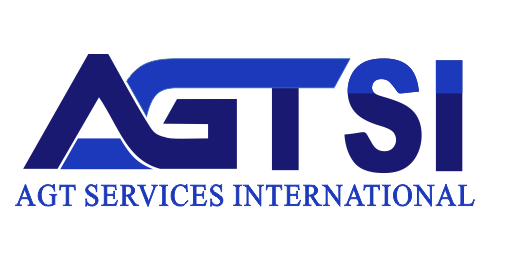In the constantly changing landscape of talent investment, understanding and taking advantage of recruiting metrics is important for staying on top. These metrics provide a valuable understanding of the capability and effectiveness of the hiring process, helping to make data-driven decisions that improve recruitment outcomes. In 2024, focusing on the right recruiting metrics will enable recruiters to attract top talent, optimize costs, and enhance the overall candidate experience. This article explores the 15 key recruiting metrics that matter most, offering actionable insights to promote recruitment strategies.
Recruiting metrics are essential for improving hiring efficiency and making informed decisions. Here are 15 key recruiting metrics to track in 2024:
1. Cracking the Code: Understanding Hiring time Metrics
Hiring time measures the number of days it takes to fill an open position from the moment a job request is posted to the candidate’s acceptance of the offer. The recruiting metrics provide a valuable understanding of the efficiency of the hiring process. If the time-to-hire is short, it often indicates an optimized recruitment process, effective job advertisements, and a strong reservoir of candidates.
On the other hand, a longer hiring period can signal inefficiencies that need addressing. Analyzing this metric can help identify stages in the hiring process that are causing delays and make necessary adjustments. For instance, a lengthy interview scheduling process or a slow decision-making phase could be the guilty parties. Reducing the hiring period not only helps in securing top talent faster but also reduces costs associated with lengthy vacancies.
In 2024, taking advantage of automation tools and improving communication among hiring teams can significantly enhance hiring efficiency. By continuously monitoring and optimizing hiring time, you can ensure a more elegant and responsive recruitment strategy.
2. Assessing Recruitment Expenditure
Hiring costs contain all expenses associated with the recruitment process, including job advertising, recruiting software, background checks, and the salaries of recruitment staff. Understanding these costs is essential for budget management and optimizing spending. By analyzing hiring costs, it also identifies areas where there might be overspending and areas where investment could produce better returns.
For example, if a significant portion of the budget is spent on job ads that don’t generate qualified candidates, it might need to redirect those funds to more effective channels. Additionally, following hiring costs helps to calculate the cost per hire, which is a valuable metric for financial planning and assessing the overall efficiency of recruitment efforts.
In 2024, with the increased availability of data analytics tools, recruiters can gain a deeper understanding of spending patterns and make more informed decisions. Balancing hiring costs while providing quality hires requires a strategic approach and continuous analysis of your recruitment processes.
3. Analyze Candidate Excellence
Quality of hire is an essential recruiting metric that assesses the performance and workforce stability of new employees. High-quality hires contribute positively to a company’s success by meeting or exceeding performance expectations and aligning well with the company culture. Measuring the analysis of the candidates can be challenging but essential for long-term business growth.
These recruiting metrics can be assessed through various means, such as performance reviews, productivity metrics, and feedback from managers and coworkers. A high-quality candidate typically shows strong performance, quick adaptability, and positive integration into the team. On the contrary, poor-quality candidates can lead to increased turnover, lower productivity, and a negative impact on team morale.
In 2024, focusing on improving the quality of hire involves purifying your selection process, using comprehensive assessments, and ensuring a thorough cultural fit evaluation. By focusing on quality over quantity, recruiters can build a more effective and cohesive workforce.
4. Hire a source of investigation
Source of hire is an important recruiting metrics that identifies where successful candidates come from, such as job boards, employee suggestions, social media, or recruitment agencies. Understanding this metric allows you to distribute resources more effectively to the channels that produce the best results.
For example, if employee recommendations consistently produce high-quality candidates, it would be beneficial to invest more in the nomination program. Following the source of hire also helps in understanding the effectiveness of recruitment marketing efforts. By analyzing which sources bring in the most qualified candidates, recruiters can refine recruitment strategies and improve the overall hiring process.
In 2024, taking advantage of advanced analytics tools can provide a deeper understanding of recruitment channels, helping make data-driven decisions. Optimizing the sourcing strategy based on the metric confirms that recruiters are attracting talent from the most productive and cost-effective sources.
5. Employment Acceptance Evaluation: Analyzing Offer Success
The job acceptance rate is the percentage of job offers accepted by candidates out of the total offers made. These recruiting metrics are essential for understanding the attractiveness of job offers and the overall candidate experience. A high acceptance rate indicates that candidates find offers competitive and appealing, reflecting well on the employer’s brand.
Conversely, a low acceptance rate may signal issues such as uncompetitive salaries, poor job fit, or a negative candidate experience during the recruitment process. To improve job acceptance rates, it’s essential to gather feedback from candidates who decline offers and understand their reasons.
In 2024, companies are expected to place a greater focus on creating attractive and comprehensive job offers, including competitive salaries, benefits, and a positive work culture. By continuously analyzing and adjusting job offers, recruiters can increase acceptance rates and secure top talent more effectively.
6. Staff Stability Strategy: Navigating Employee Departures
The employee turnover rate is a recruiting metrics that measures the percentage of employees who leave an organization within a specific period. High turnover rates can indicate underlying issues such as poor job satisfaction, inadequate onboarding, or a mismatch between the employee and the company culture. Managing and reducing turnover rates is essential for maintaining a stable and productive workforce.
To address high turnover, companies need to analyze the reasons behind employee departures through exit interviews and surveys. Identifying patterns and common themes can provide valuable insights into areas that need improvement.
In 2024, focusing on enhancing employee engagement, providing career development opportunities, and fostering a positive work environment will be key strategies for reducing turnover. By proactively managing turnover rates, recruiters can improve employee satisfaction, reduce recruitment costs, and build a more committed and loyal workforce.
7. Enhancing Candidate Engagement
Candidate experience is an important metric that measures how job seekers perceive and interact with the recruitment process. A positive candidate experience can enhance the employer brand, increase the likelihood of job acceptance, and encourage candidates to reapply or refer others.
On the other hand, a negative experience can discourage top talent and damage the company’s reputation. To ensure a positive candidate experience, it’s important to facilitate the application process, provide timely and transparent communication, and offer constructive feedback.
In 2024, taking advantage of technology such as AI-driven chatbots and personalized communication tools can help enhance candidate engagement. Additionally, gathering feedback from candidates at various stages of the hiring process can provide valuable insights for continuous improvement. By prioritizing a positive candidate experience, candidates can attract and retain top talent more effectively.
8. Upholding Diversity as a Core Value in Hiring
Diversity hiring metrics measure the inclusiveness and variety of the recruitment process. Highlighting diversity in hiring goes beyond legal compliance; it promotes a more innovative and inclusive workplace. Chasing diversity metrics involves analyzing the representation of different demographics within candidate reservoirs and new hires.
In 2024, companies are expected to place a greater emphasis on creating diverse and inclusive hiring practices. It includes implementing uninvolved recruitment processes, promoting diverse job advertisements, and providing training on diversity and inclusion for hiring teams.
By focusing on diversity, recruiters can tap into a broader talent pool, enhance creativity, and improve employee satisfaction. Regularly reviewing and adjusting diversity hiring metrics ensures that recruiters are promoting an inclusive workplace that values and respects all individuals.
9. Assessing Recruitment Effectiveness: Response Rates
The candidate follow-up rate measures the percentage of job seekers who are invited for further stages in the recruitment process, such as interviews or assessments. This metric provides a sense of the effectiveness of the initial candidate screening and selection processes.
A high follow-up rate suggests that job postings and screening methods are attracting suitable candidates. In contrast, a low rate may indicate that criteria are too strict or job descriptions are unclear. In 2024, refining job descriptions, taking advantage of AI tools for resume screening, and ensuring clear communication of job requirements can improve the follow-up rate.
By continuously monitoring and optimizing this metric, recruiters can enhance the efficiency of the recruitment process and ensure that they are engaging with the most qualified candidates.
If you want more information about recruitment agencies, click here.
10. Application Density Analysis: Candidates per Role
Candidate per role is a metric that measures the average number of applicants for each job opening. This metric provides a sense of the attractiveness of job postings and the competitiveness of the position. A high number of candidates per role shows a strong interest in the role, while a low number may suggest that the job description is not appealing or that it is not reaching the right audience.
To improve this metric, it’s important to ensure that job postings are clear, effective, and widely distributed across various channels. In 2024, utilizing social media, job boards, and employee referrals can help increase the visibility of job openings. By continuously observing and adjusting recruitment strategies, the company can attract a larger and more qualified pool of candidates.
11. Recruiter Manager Approval Index
The Recruiter Manager Approval Index is a metric that measures the satisfaction of hiring managers with the recruitment process and the quality of new hires. This metric is important for ensuring that the recruitment process aligns with the needs and expectations of the organization. High satisfaction levels indicate that the recruitment team is effectively meeting the requirements of hiring managers, while low satisfaction levels may suggest areas for improvement.
To enhance the recruiter manager approval index, it’s important to maintain open communication, set clear expectations, and provide regular updates throughout the hiring process. In 2024, leveraging feedback from hiring managers can help identify pain points and improve cooperation between recruitment teams and hiring managers. By focusing on the recruiter manager approval index, the company can ensure a more efficient and effective recruitment process
12. Acceptance Quotient is recruiting metrics
The acceptance quotient is the percentage of job offers accepted by candidates out of the total offers made. This metric is essential for understanding the competitiveness of job offers and the overall candidate experience. A high acceptance rate indicates that candidates find offers appealing and are eager to join the organization.
In contrast, a low rate may signal issues such as uncompetitive salaries, poor job fit, or a negative candidate experience. To improve offer acceptance rates, it’s important to gather feedback from candidates who decline offers and understand their reasons. In 2024, companies are expected to place a greater emphasis on creating attractive and complete job offers, including competitive salaries, benefits, and a positive work culture.
By continuously analyzing and adjusting job offers, recruiters can increase acceptance rates and secure top talent more effectively.
13. Recruitment Decision Metrics
The recruitment decision metric is a metric that measures the number of applicants hired compared to the total number of applicants. This metric provides an understanding of the selectivity and competitiveness of the recruitment process. The low recruitment decision metric suggests that the company is hiring only a small percentage of applicants, suggesting a highly competitive process.
In contrast, a high recruitment decision metric may indicate that the company is hiring a larger proportion of applicants, potentially compromising on quality. To improve this metric, it’s important to ensure that the recruitment process is thorough and selective, focusing on identifying the most qualified candidates.
In 2024, leveraging advanced screening tools and complete assessment methods can help improve the selectivity of the recruitment process. By continuously scanning and optimizing the recruitment decision metric, the company can ensure that recruiters are hiring the best candidates for the organization.
14. Monitoring Workforce Status: Assessing Open Position Percentage
The percentage of open positions is a metric that measures the proportion of blank roles within an organization at any given time. This metric provides insights into workforce stability and recruitment efficiency. A high percentage of open positions may suggest challenges in serving roles or high turnover rates, while a low percentage suggests a more stable and efficient recruitment process.
To improve this metric, it’s important to simplify the hiring process, enhance employee stability strategies, and ensure that recruitment efforts are aligned with organizational needs. In 2024, leveraging workforce planning tools and data analytics can help anticipate hiring needs and reduce the percentage of open positions.
By continuously observing and adjusting recruitment strategies, recruiters can maintain a more stable and efficient workforce.
15. Assessing Recruitment Funnel Success: Key Performance Indicators
Recruitment funnel success measures the efficiency of each stage of the recruitment process, from initial candidate sourcing to final hire. This metric provides an understanding of where candidates are dropping off in the recruitment process and helps identify areas for improvement.
A highly effective recruitment funnel ensures that candidates move smoothly through each stage, resulting in successful hires. To improve this metric, it’s important to analyze each stage of the recruitment process, from initial application to final offer, and identify any bottlenecks or inefficiencies.
In 2024, leveraging data analytics and automation tools can help enhance the efficiency of the recruitment funnel. By continuously observing and optimizing each stage of the recruitment process, you can ensure a more effective and streamlined hiring process.
Final Thoughts
Effectively following and optimizing these 15 recruiting metrics can significantly enhance recruitment strategies in 2024. By understanding the key metrics, such as time to fill, hiring costs, and quality of hire, recruiters can make more informed decisions and improve the overall efficiency of their recruitment process. Additionally, focusing on metrics like candidate experience, diversity, and hiring manager satisfaction can help create a more positive and inclusive hiring environment.
Focusing on data analytics and advanced recruitment tools will be essential to optimizing these metrics and ensuring a successful recruitment strategy. By continuously monitoring and adjusting recruitment efforts based on these key metrics, recruiters can attract and retain top talent, reduce costs, and build a more effective and cohesive workforce.



















